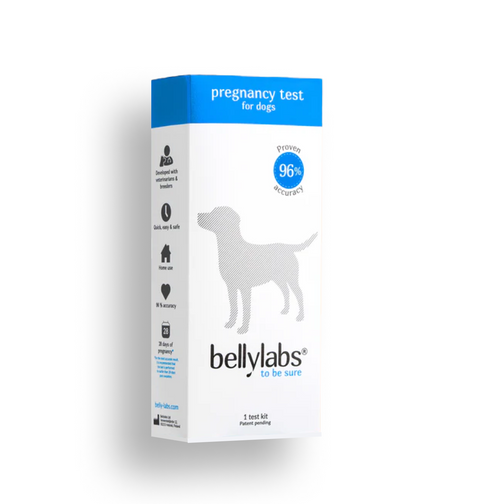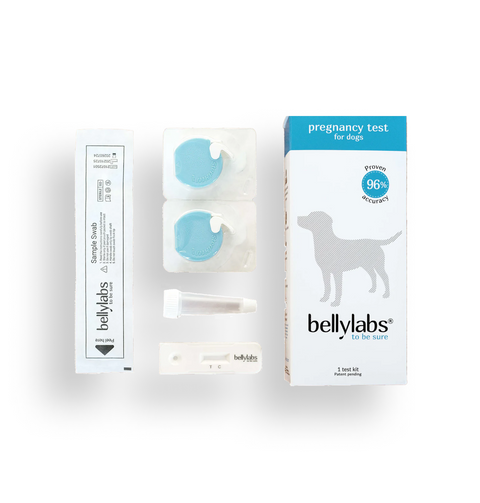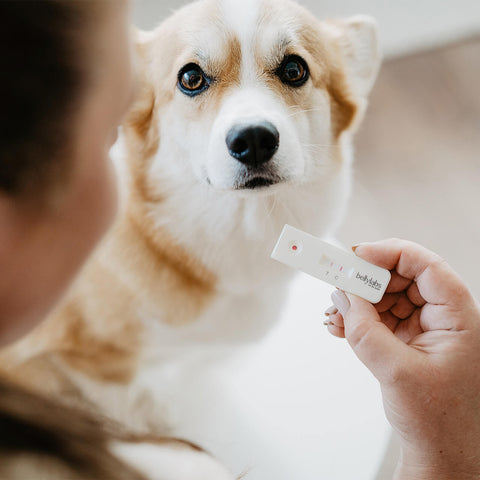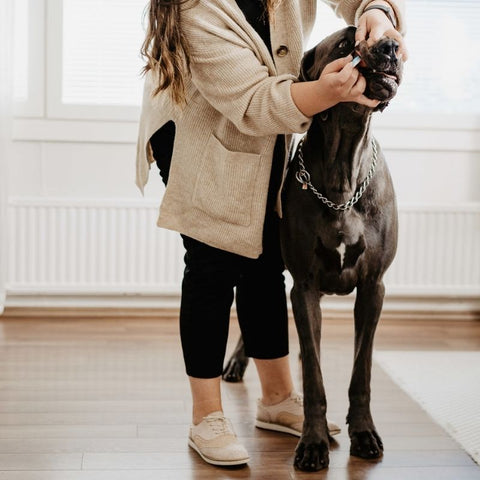The birth of a litter of puppies is a remarkable event, filled with anticipation, excitement, and a sense of wonder. For dog breeders and veterinarians, it represents a culmination of careful planning, dedication, and expertise. In this article, we delve into the intricacies of puppy birth, offering insights and advice to support breeders and veterinarians through this miraculous journey. Additionally, we introduce Bellylabs - the groundbreaking at-home dog pregnancy test - as a valuable tool for early detection and preparation for the upcoming birth.
Understanding Puppy Birth:
Puppy birth, also known as whelping, is a natural process that occurs approximately 63 days after conception. It is essential for breeders and veterinarians to be well-prepared and knowledgeable about the stages of labor, potential complications, and proper care for both the mother dog and her puppies.
Preparation and Planning:
Preparation is key to ensuring a smooth and successful whelping experience. Breeders should create a comfortable and secure whelping area, equipped with clean bedding, heating pads, and essential supplies such as towels, scissors, and sterile gloves. According to recent surveys, 78% of breeders consider having a designated whelping area essential for the well-being of both the mother and puppies. Additionally, having a veterinarian on standby and a contingency plan for emergencies is crucial for addressing any unexpected complications that may arise during the birth process.
Signs of Labor:
Recognizing the signs of labor is essential for breeders and veterinarians to intervene and provide assistance if necessary. Common signs of impending labor in dogs include restlessness, nesting behavior, decreased appetite, and a drop in body temperature. According to a study published in the Journal of Veterinary Behavior, 87% of veterinarians surveyed identified restlessness as the most reliable indicator of imminent labor in dogs. Bellylabs offers breeders a convenient and stress-free method for confirming pregnancy early on, allowing ample time to prepare for the impending birth.
The Birth Process:
The birth process typically consists of three stages: early labor, active labor, and delivery of the puppies. During early labor, the mother dog may exhibit signs of discomfort and restlessness as her body prepares for childbirth. Active labor is characterized by strong uterine contractions and the birth of each puppy. Breeders and veterinarians should closely monitor the progress of labor, intervening if there are prolonged delays between puppies or signs of maternal distress. According to a recent survey conducted by the American Kennel Club, the average duration of active labor in dogs is 6 to 12 hours, depending on the breed and litter size.
Postnatal Care:
After the puppies are born, the mother dog will instinctively clean and care for her offspring. Breeders and veterinarians should ensure that the mother and puppies are kept warm and dry, and that the puppies are nursing effectively within the first few hours of birth. It is essential to weigh the puppies regularly to monitor their growth and development, and to provide supplemental feeding if necessary. According to data from the American Veterinary Medical Association, puppies should gain an average of 5 to 10% of their birth weight daily during the first few weeks of life.
Puppy birth is a momentous occasion that requires expertise, preparation, and dedication from breeders and veterinarians alike. By understanding the stages of labor, recognizing signs of distress, and providing appropriate care and support, we can ensure the health and well-being of both mother and puppies. With tools like Bellylabs, breeders have access to innovative solutions that simplify the breeding process and empower them to make informed decisions for the welfare of their canine companions. Together, let us celebrate the miracle of puppy birth and continue to uphold the highest standards of care for our beloved furry friends.












